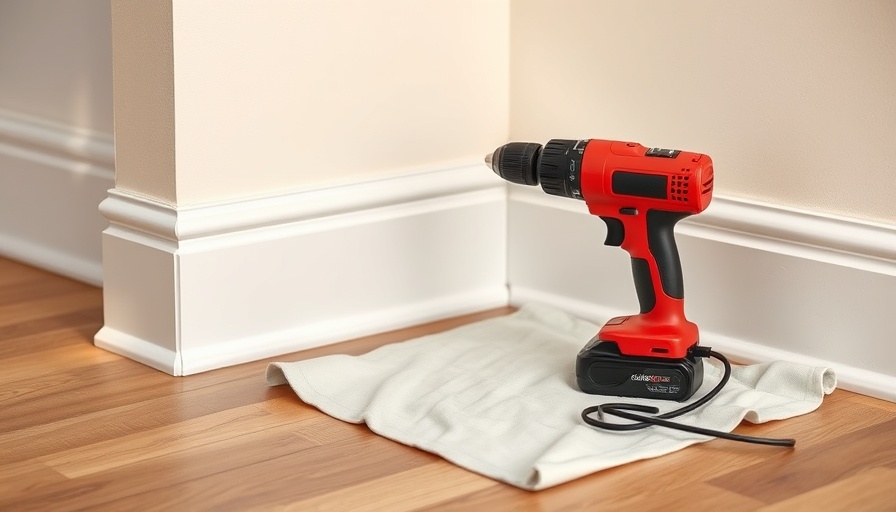
Why Proper Handwashing is Essential for Health and DIY Success
Washing your hands may seem straightforward, but doing it right can have significant implications for your health and the outcome of your DIY projects. Our hands are constantly exposed to germs and harmful substances, from door knobs to dog toys. As preventative health expert Dr. Bill Kapp notes, dirty hands can transfer bacteria, chemicals, and oils that might not only harm your body but also affect the surfaces and tools you work with during home improvement projects.
This is doubly critical for homeowners engaging in renovations. Wet, dirty hands can interfere with paint adhesion, leave traces on tools, and damage delicate materials. The act of handwashing goes beyond personal hygiene; it’s an integral practice in ensuring successful home projects.
Understanding the Science Behind Handwashing
Dermatologists emphasize that our skin serves as a primary barrier against contaminants. Dr. Stephanie Taylor reminds us that improper handwashing can jeopardize our skin's protective layer, leading to conditions like contact dermatitis or even infections. When we neglect to wash away harmful substances, we increase the risk of triggering skin issues that can be troublesome and painful.
Moreover, washing your hands correctly is one of the simplest yet most effective ways to forestall illnesses, from common colds to serious infections. As Dr. David Johnson points out, keeping your hands clean is crucial not just for overall wellness but also for maintaining the health of your skin while engaging in hands-on tasks like home repairs.
The Right Technique for Effective Handwashing
Knowing how to wash your hands properly can make a world of difference. The right technique includes:
- Turn on clean, running water and wet your hands.
- Apply soap, lathering thoroughly. Don't forget to scrub the backs of your hands, between your fingers, and under your nails.
- Wash for at least 20 seconds; a good rule of thumb is to sing "Happy Birthday" twice.
- Rinse everything off under running water.
- Dry your hands with a clean towel or air dry them.
This routine is especially crucial after working on home projects. If you’ve been in the garage or garden, you might need to consider using specialized soaps. Heavy-duty soaps with pumice or degreasers, like Gojo or Fast Orange, are ideal for dealing with greasy residues, but be mindful not to use those too frequently as they can be harsh on the skin.
Using the Right Soap for Specific Messes
When tackling oil-based or spray paints, regular soap and water won’t suffice. You’ll need mineral spirits to break down these materials effectively. After working with such substances, follow up by washing your hands again with warm—not hot—water and a mild pH-balanced soap. This helps to ensure that your hands remain hydrated and healthy.
Post-washing, particularly after using harsh soaps or cleaners, applying a thick hand cream like Eucerin Advanced Repair can restore moisture and further protect your skin.
The Long-Term Benefits of Good Hand Hygiene
Making a habit of proper handwashing can yield lasting health benefits and be an integral part of your DIY repertoire. Well-cared-for hands not only look better, but they feel better and work better too. You can save yourself the discomfort of skin conditions and ensure that your projects proceed without unnecessary setbacks.
Moreover, this simple practice can enhance overall home safety, especially if food preparation is part of your DIY endeavors. Clean hands mean less chance for cross-contamination in the kitchen, which is essential for anyone who enjoys cooking or entertaining.
Quick Tips to Reinforce Handwashing Habits
- Set a Timer: Use your phone to time 20 seconds while washing your hands.
- Visual Reminders: Place a handwashing reminder in bathrooms and kitchens.
- Make it Fun: Engage kids in the handwashing process by singing together.
By simplifying effective habits like these and understanding their importance, you can elevate your DIY projects while maintaining a healthy space.
Take Action for Your Health Today!
Now that you know the proper techniques and the reasons behind them, it’s time to implement these tips into your daily routine. Whether you're prepping for a dinner party or tackling your next home project, keep your hands clean and healthy. Remember, good hygiene is not just about washing hands; it’s about fostering a healthier lifestyle.
 Add Row
Add Row  Add
Add 




Write A Comment